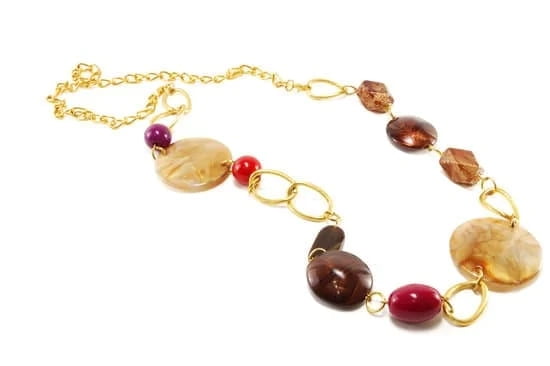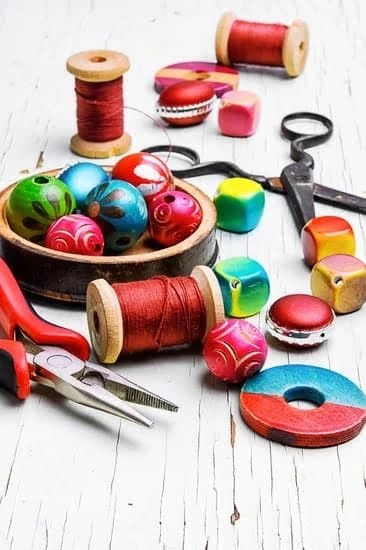Introduction
Gold jewelry welding is the process of joining two pieces of gold jewelry together with a heat source to create a permanent seam. It’s an important step in the process of creating and repairing varied forms of jewelry from rings to chains, necklaces, earrings and more. Gold jewelry welding is used by professionals for commercial purposes and for private use too, to ensure exacting standards in the fabrication and repair of jewelry items. The weld must be strong, neat and secure without being overly visible on the finished piece.
This type of welding requires specific tools and techniques depending on the item being created or repaired. First, a welder will choose either Gas Tungsten Arc Welding (GTAW) or Gas Metal Arc Welding (GMAW). GTAW is low-intensity compared to GMAW which produces higher heat levels. The correct heat intensity will depend on what type of gold you are working with – 22 karat gold typically requires a lower heat setting than 14 karat gold for instance. To protect the gold from melting or becoming discolored due to excessive heat, flux should also be added during this stage.
Once the tools have been selected, it is time to join the pieces together piece by piece: first by heating each section then pressing them together using pressure tongs and other jewelry clamping devices until they are securely joined. Throughout this process it is important to pay attention to where you are placing each section as it may need additional soldering later on depending on whether any parts do not reach full fusion due to poor positioning or thickness discrepancy between components. Once all pieces have been joined and fused uniformly, flux can be applied again before performing final polishing as necessary so that there are no imperfections visible in the finished product.
Materials Needed to Successfully Weld Gold Jewelry
Welding gold jewelry takes precise tools and supplies to achieve the desired result. Here is a list of materials that are necessary for successful welding of gold jewelry:
1. An Oxy-Acetylene Torch: This torch gives you complete control over the flame, allowing different temperatures to be achieved depending on the type of gold used. It is also crucial that all components in the oxy-acetylene system meet safety standards, as gold gets very hot during welding and incorrect settings can lead to dangerous results.
2. A muffle kiln: This provides a controlled environment for the welds, shielding nearby areas from too much heat exposure and sparkling debris produced during welding.
3. Weller Soldering Station: This station helps maintain consistent temperature settings when soldering small parts such as chains and stones. For some pieces, having a steady yet low heat setting can make all the difference in achieving a quality weld while minimizing heat stress on other parts of the piece.
4. Gold Welding Rods or Wire: These rods or wires provide additional material at joint or fill any gaps between two pieces being joined together during welding process,. The size and incorporation of these rods or wires will depend on the piece being welded; consult an experienced decision maker prior to purchasing what type is right for your project!
5. Jewelers Vice with Cross Peen Hammer: A cross peen hammer will be needed in some situations where power tools cannot reach into tight area where precision work is needed – such as a stone setting job or installation of a line loop closure within a charm design . . . .The jewelers vice will firmly hold pieces securely in place for accurate cutting/shaping purposes.
Understanding Gold Jewelry and Welding Techniques
Welding gold jewelry is a delicate process that requires an understanding of the metal and its properties. The melting point of gold is lower than that of other metals, such as silver or iron, and thus it needs to be handled with precision. When welding gold jewelry, it is important to use the right welding tools and techniques.
The first step in successfully welding gold jewelry is to ensure you are working with clean and prepared pieces. Gold jewelry should not have any dirt, debris, or oils on its surface in order to ensure a successful weld. It’s best to wear gloves while handling the pieces to avoid contamination. It’s also important to ensure the pieces are properly aligned prior to beginning the welding process in order for them to fit correctly when joined together.
Next, it’s time to determine which kind of welding technique will work best for your particular project. There are several different types of soldering methods available for gold jewelry such as oxyacetylene gas soldering, laser welding or arc welding. Depending on the complexity of your piece and what type of look you are trying to achieve, one method may be more suitable than another.
Finally, once you have chosen your desired method and have all of your tools ready, it’s time for final prep work before beginning your project. It’s important that the metal surfaces being joined don’t move during the process; if they do this could potentially ruin your work. To ensure stability during the process, consider clamping down each piece into a sturdy platform that won’t slip or shift as they heat up during welding. Following these tips will help give you successful results when attempting to weld gold jewelry pieces together!
Selection of the Appropriate Welding Tool
When welding gold jewelry, it is important to select the appropriate welding tool. Jewelry welders rely on electricity to heat and join pieces of metal together with extreme accuracy. There are many different types of welding tools available to accommodate various projects and skill levels. For example, a soldering iron is good for smaller welding jobs while a TIG welder produces cleaner welds than other tools and is ideal for more detailed work. It’s essential to determine the type of gold you’ll be working with along with the thickness of the pieces that need to be joined in order to choose a tool that can handle both safely and efficiently.
Checking the Welding Material Quality
When it comes to welding gold jewelry, it is important to ensure that you have the right material quality. This means that you should make sure that your gold pieces are of a pure gold composition or are made out of solid gold alloys. The higher the karat rating of a piece, such as 18-karat or 22-karat, the better quality your material is going to be when it comes time to weld. Additionally, take the time to properly prepare and clean your pieces before attempting any welding process. Make sure there are no cracks, flaws or discolorations that may affect the weld integrity of your jewelry later down the line.
Preparing the Gold Jewelry and Welding Materials
Welding gold jewelry requires some specialized materials. After gathering your tools, the first step is to prepare the gold pieces for welding. Do this by scrubbing them with a small brush to remove dirt, oils and debris. Next, use a polishing cloth to buff away any fingerprints or other residue from handling. Doing so will ensure a cleaner weld joint when finished.
Before welding, you’ll need to grab your welding rod specifically designed for working with precious metals such as gold. Gold has several alloys and each require different rods based on the karat weight of the metal (e.g 10k gold uses an easy-flo rod). Take care to wear safety glasses when working since sparks will fly during the welding process. Additionally, you’ll want to make sure you are in a well-ventilated area where no combustibles are present due to fumes that could be created during the weld.
Once your materials are ready, set up your workspace by clamping down two pieces of scrap steel or iron and positioning them close together so they cross at 90 degrees – it’s best to keep these as parallel as possible while welding.. Place your gold pieces on top of the steel clamps and adjust accordingly so they fit comfortably against each other. You can also add pieces of brass or silver if necessary but take caution since these are much softer than both steels and can possibly melt under high heat temperatures. Finally, fire up your welder and begin!
The Welding Process Step by Step
1. Gather the necessary tools: Gold jewelry welding requires a range of specialized tools and supplies, such as a welder with appropriate settings, gold brazing rods, flux, pickle pot, soldering block and more.
2. Prepare the metals to be welded: Make sure all pieces are clean, free of tarnish or debris, and make certain that the surfaces to be joined are flat and even so that they meet properly for the strongest weld.
3. Begin heating the piece: Set up your welder depending on its specific instructions and start applying direct heat evenly throughout the pieces you want to join. Make sure not to leave in one place longer than needed or overdo it because too much heat can damage the jewelry or soften painful areas making them lumpy or unevenly shaped after cooling down.
4. Start welding/brazing: Apply solder flux around where you will be joining the two pieces of gold together before adding brazing alloy onto it. As soon as both items reach a melting point (you will usually see a liquid form around the joint) you must move quickly to press them together firmly with pliers or tweezers until sufficient expulsion takes place, which indicates that they have connected properly.
5. Clean off any excess material: Use pickle pot (a very mild acid solution) to remove traces of solder alloy from finished joinery as well as any other residue on your jewellery piece before allowing it to cool completely so that it retains its shape and finish perfectly.
Finishing and Finishes for Gold Jewelry
Gold has been a popular choice for jewelry design and production since ancient times. As one of the most malleable and ductile metals, it is relatively easy to bend, shape, and otherwise work into a wide array of pieces that can be beautifully crafted for personal adornment. One of the oldest yet most durable methods for forming gold jewelry is welding. Welding gold requires precise technique and an intimate understanding of its physical properties, but when done correctly can create strong results that will last for years with only minimal signs of wear.
When welding gold jewelry, cleanliness is key. Always start with a clean surface free from debris or oxidation that could negatively impact the quality of the weld. Ensure all tools are sterilized as well so there won’t be any contamination or marring of the gold. Welds should also be performed on perfectly clean metal so particles and other marks do not interfere with the solder joint’s integrity; this usually means gentle polishing to remove any dirt or tarnish before beginning work.
The process involves melting together two pieces of gold using a welder’s torch and then applying either a borax flux (which helps solder bond) or using a filler rod made especially for these types of jobs. A good flux will help reduce oxide buildup which affects the strength of the bond, while the right filler rod should have an alloy composition that matches the gold being welded together. Depending on their method, artisan jewelers might use soldering blocks, clamps, pliers, as well as various tools such as files/grinders to achieve their desired result – smooth weld lines free from gaps or slag inclusions common in beginner welds
The final stage after welding is ensuring proper finishing and treatments for your newly formed piece(s). Common options include rhodium plating (for white golds) to add extra shine; polishing with abrasive paper/stones up to 1000 grit for smoothing imperfections on otherwise final surfaces; applying protective wax layers; and various types of post-welding outlining techniques that help complete details in hard to reach areas like flowers or profiles on certain pieces. The possibilities are endless when it comes to optimizing each piece’s look through creative forethought and application!
Cleaning the Welded Gold Jewelry
Cleaning the welded gold jewelry is an important step in ensuring that your welds are of the highest quality. Begin by using a specialized gold jewelry cleaner, which is designed to gently remove oils and buildup. Afterward, use a lint free cloth to polish the surface and remove any remaining residue, taking care not to scratch the soft metal. Finally, take a toothbrush and scrub away any dirt or debris that may be stuck between pieces of jewelry or on the edges of soldered joints. For an extra sparkle and shine, try using a dab of mild jewelry cleaner on a soft, clean cloth before polishing with cloth again. This will help keep your gold jewelry looking as beautiful as it did when you first made it!
In-depth Analysis of Welder Quality
When welding gold jewelry, welder quality can make all the difference. Quality welding produces better, more detailed results and will protect the jewelry from damage, such as cracking or melting. Knowing what features matter for good welds, and how to find a high-quality welder suited for smaller items is essential when working with precious metal pieces.
Things to consider when looking for a welder include the power of the machine, portability and air flow. A higher power means that the welder can handle bigger pieces, while portability allows jewelers to take their equipment on the go if they do custom work at someone else’s location. Air flow is important because it adds protection but also helps cool down surrounding areas so that anything close by to where you are working isn’t damaged by excessive heat production.
Always research any potential welders online before making a purchase. Read customer reviews if available and assess its capabilities using independent tests from professional jewelers in your area. Additionally inquire about warranty options since this could save you money in repairs later on if something does happen to go wrong with your unit. And make sure to check for compatibility with soldering supplies before finalizing the purchase – most higher quality welders should be able to use both small diameter wire for fine detail work or larger rods for bigger jobs without any issues.
Common Mistakes and Tips to Avoid Them
Welding gold jewelry incorrectly can cause a number of problems, including warping, discoloration, and breakage. To ensure the quality of your finished product and help you avoid these common pitfalls, here are some mistakes to avoid when welding gold jewelry and tips on how to fix them:
1. Not preheating properly: Preheating gold is an important step in the welding process as it helps to reduce thermal shock that can damage the material while welding. Therefore it’s important to make sure that you are preheating the metal evenly by using appropriate heat sources like gas, induction or a flame torch.
2. Not forming uniform joints: Inconsistent seams can be avoided by ensuring that all surfaces are cleaned before welding and setting up guides at intervals for even pieces. It’s also important to use similar alloys for both pieces of metal so they have consistent flows and tempers during the joining process.
3. Not controlling temperature: Temperature control is key in successful jewelry welding because if too little heat is applied the pieces won’t fuse together and if too much heat is applied then it will cause warping or discoloration. Therefore, it’s essential to use a thermocouple with an adjustable current supply in order to precisely control the temperature for each weld and maintain quality results every time.
4. Not annealing correctly: Annealing helps strengthen and soften gold which allows for easy molding when needed; however, not following proper annealing techniques can lead to cracking or brittle materials during the fusion process which could lead to warping and potentially breaking finished pieces apart later on down the line. To prevent this from happening always use appropriate furnace cooling cycles after annealing and let cool slowly overnight before resuming operations again.
Safety Measures and Precautions When Welding Gold Jewelry
When welding gold jewelry, one should take several safety and precaution measures. First, always wear protective gear to avoid any injury from sparks or hot metal. This includes wearing safety goggles, a face shield, and gloves that cover both hands. Second, make sure the item being welded is secured on a sturdy surface such as a soldering table using either clamps or locking pliers. Third, never leave your work unattended while working with high heat equipment as this could cause hazards. Finally, use properly rated torches and be sure they are provided with an adequate air supply and ventilation when working. All these measures ensure a safe process and minimizes any risk of damage to the gold jewelry while also protecting you from any potential harm!
Cleaning and Maintenance of Gold Jewelry
When it comes to welding gold jewelry upkeep and maintenance are essential. Before attempting any kind of soldering, make sure that all the parts you will be working with are clean of dirt and other foreign particles. Use a combination of warm water and soap to gently scrub away dirt and grime. Once your components have been thoroughly cleaned make sure you dry them off completely before beginning the welding process. Additionally, it is important to inspect the area where your pieces will be joined together to ensure there is no corrosion present. If corrosion is identified, use a polishing cloth to remove it before moving forward. Lastly, investing in quality tools and supplies can greatly improve overall results when welding gold jewelry. Be sure to source items such as soldering paste, flux, and tweezers specifically designed for this purpose, which will provide more consistent outcomes that last longer over time.
Conclusion
Welding gold jewelry provides a number of benefits and outcomes that make it an attractive option for jewelry designers, manufacturers, and repair professionals. Gold welding is a cost-effective alternative to traditional methods because it offers a strong join without the need for costly chemicals. It also eliminates the need for clasps, solder, or precious metal alloys like nickel, providing a high quality weld at lower costs. The lasting bonds created from gold welding result in superior strength and longevity when compared to methods such as soldering. Finally, due to its high malleability, gold can be heated and worked with relative ease which makes it ideal for complex jewelry designs. By combining these advantages with one’s own skills and expertise, gold welding opens up endless possibilities for creating beautiful pieces of timeless jewelry.

Welcome to my jewelry blog! My name is Sarah and I am the owner of this blog.
I love making jewelry and sharing my creations with others.
So whether you’re someone who loves wearing jewelry yourself or simply enjoys learning about it, be sure to check out my blog for insightful posts on everything related to this exciting topic!





